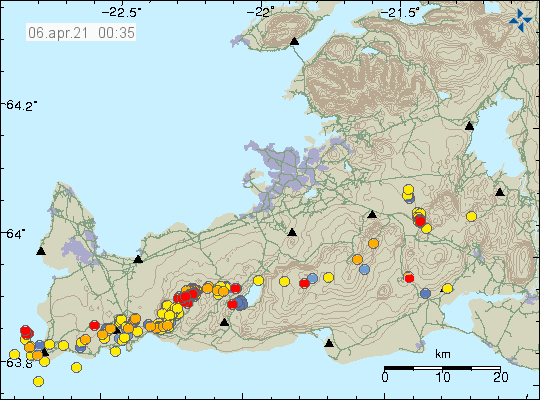This is a short update and second update for 6-April-2021 for Fagradalsfjall mountain that is part of Krýsuvík-Trölladyngju volcano system.
- During the night a new fissure was discovered between the new eruption and the old eruption. The fissure is about 150 meters long and there is hot air coming up from it.
- There are reports of a new fissure north of the new eruption and land has been sinking down at that location. No other changes have been reported at the writing of this article.
- The lava going down into Meradalir valley slows down once it is there because it cools down quickly once it is there. There is a lava river going down in the Meradalir valley and that lava is moving quickly.
- It is now estimated that this is a start of a long volcano activity period on Reykjanes peninsula that is going to last for centuries with breaks of 10 to 20 years between active periods of 30 to 50 years.
The situation is currently changes often during the day and the night and the risk of a new eruptions starting without any warning is now extremely high.
Donations
Please remember to support my work with donations if you can. Thanks for the support. 🙂

